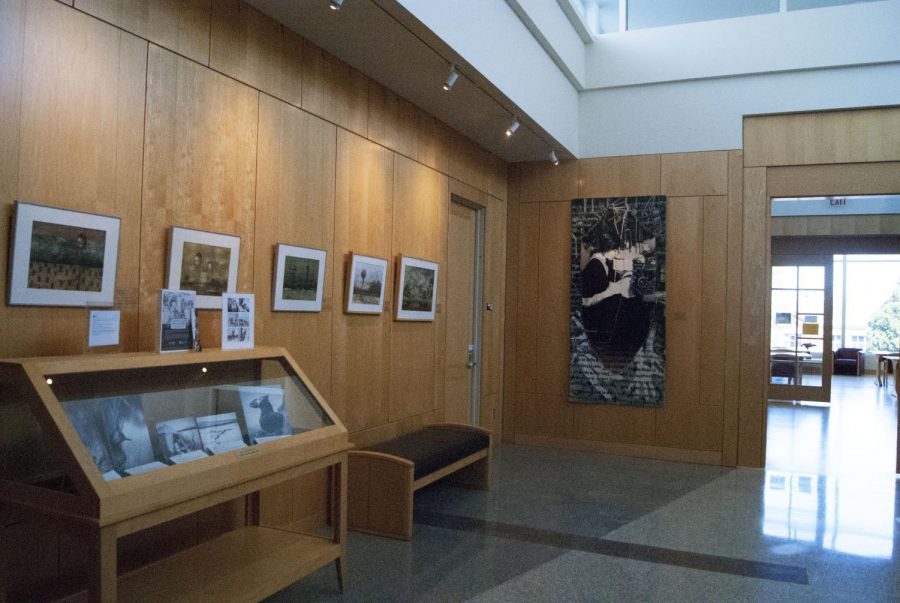OSU Libraries receive grant money for activist photographic collection
May 13, 2019
After winning a competitive Library Services and Technology Act grant, Oregon State University Libraries will begin to make the Chuck Williams collection accessible to the public.
LSTA grants are available for any public library in Oregon to apply for. In January, OSU Special Collections and Archives Research Center submitted an application with partner Willamette University Libraries for the shared project “Preserving the Legacy of an Oregon Activist and Artist: Making Accessible the Chuck Williams Collections.” This project seeks to preserve and make accessible the work of Williams, an Oregon photographer, activist, and member of the Grand Ronde tribe. Although WU Libraries is the official applicant, both universities will benefit from the $81,156 grant.
According to Natalia Fernández, curator and archivist of the Oregon Multicultural Archives and OSU Queer Archives, the idea to apply for an LSTA grant came up years ago. In 2016, OSU acquired Williams’ photographic collection while WU acquired papers detailing Williams’ years as an environmentalist and activist.
“We knew that we wanted to collaborate on a project to ensure both collections would be cared for and made accessible to the public,” Fernández said via email.
Larry Landis, director of SCARC, provided guidance during the creation of the grant proposal. According to Landis, due to the large size of Chuck Williams photographic collection, over 185,000 slides and 7,000 prints, the extra funding was needed.
“We felt that it would probably require some outside funding to make the collection available to researchers,” Landis said.
Fernández and project partner Mary McRobinson began working on the application last November and submitted a final draft in January. In April, the State Library Board approved LSTA funding recommendations at which point grant recipients were notified.
“We were both thrilled when we learned we were awarded an LSTA grant,” Fernández said via email. “We are so excited that our project will enable the public to have access to the collections.”
The main purpose of the project is to make both collections accessible, which will involve digitizing certain content, creating a public exhibition, and promoting the collections to regional and national viewers. According to Fernández, the majority of the funds will be used to hire a full time Project Archivist for a year to work on these tasks so that the collections can become accessible by 2020.
According to Landis, accessibility means making collections available online as well as organizing them in a way that is useful to researchers.
“If you don’t have information about the collection and don’t know where things are in the collection, it’s really not very usable,” Landis said.
Fernández believes that when the collection is made public, it will have broad research appeal to those studying subjects such as environmental science and politics, legal and legislative studies, grass-roots activism, photography, and Oregon’s communities of color and multicultural history.
OSU’s Chuck Williams Photo Collection features thousands of his photographs dating from the 1980s to the 1990s. Many of the photographs feature cultural events throughout Oregon and the Pacific Northwest such as Homowo Festival, India Festival, and Greek Festival. Williams photographed numerous tribal events including Pow-Wows and tribal community clinics. Other photographs show Williams’ love of local landscapes throughout Oregon such as rivers, mountains, and parks.
“These rich and varied images will provide researchers and the public with visual knowledge of both well and lesser-known Oregon festivals, communities, and landscapes,” Fernández said via email.
Landis also believes that the diversity of the photographs means that they will appeal to a wide variety of people.
“Somebody might be interested in these great photographs of events that Chuck Williams photographed, somebody else might have a deep interest in the photographs that he took of various indigenous communities,” Landis said.
WU’s Chuck Williams Activist Papers document Williams’ struggle to preserve the Columbia River Gorge. His activism during this time helped to create the National Scenic Area Act, which protects certain areas from further development.
According to Landis, OSU has received LSTA funding in the past, and was the winner of the 2016 LSTA project of the year for its work in digitizing William L. Finley collections.
“We have a strong track record of receiving LSTA grants,” Landis said.
























































































































